president eisenhower
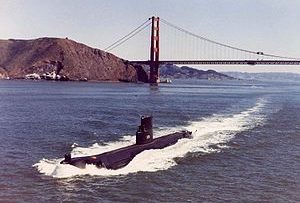 Submarines have always fascinated me. To be able to travel completely submerged for extended periods of time is quite amazing. One of the greatest submarines ever was the USS Seawolf (SSN 575). Seawolf was not the first nuclear submarine. That honor goes to the Nautilus, but the Seawolf was an amazing submarine with an amazing future ahead of her. The Seawolf was built by the General Dynamics Corporation’s Electric Boat Division, Groton, Connecticut, and was laid September 15, 1953. Mrs. W. Sterling Cole christened the SEAWOLF at the launching ceremony on July 21, 1955 under the command of Commander Richard B. Laning, United States Navy.
Submarines have always fascinated me. To be able to travel completely submerged for extended periods of time is quite amazing. One of the greatest submarines ever was the USS Seawolf (SSN 575). Seawolf was not the first nuclear submarine. That honor goes to the Nautilus, but the Seawolf was an amazing submarine with an amazing future ahead of her. The Seawolf was built by the General Dynamics Corporation’s Electric Boat Division, Groton, Connecticut, and was laid September 15, 1953. Mrs. W. Sterling Cole christened the SEAWOLF at the launching ceremony on July 21, 1955 under the command of Commander Richard B. Laning, United States Navy.
Unlike, Nautilus, the Seawolf used liquid sodium instead of water as a moderator and cooling medium. The Seawolf was to be given many honors and awards during her time of service, with one of the greatest being on September 26, 1957, when Seawolf hosted President Dwight D. 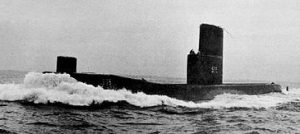 Eisenhower for a submerged run off Newport, Rhode Island. It was the first time the Commander and Chief was transported by nuclear propulsion. That makes it an amazing event for the Seawolf and for the President. Additionally, while on a port visit in Provincetown, Massachusetts, Seawolf was host to NBC telecast of “Wide, Wide World” on December 8, 1957.
Eisenhower for a submerged run off Newport, Rhode Island. It was the first time the Commander and Chief was transported by nuclear propulsion. That makes it an amazing event for the Seawolf and for the President. Additionally, while on a port visit in Provincetown, Massachusetts, Seawolf was host to NBC telecast of “Wide, Wide World” on December 8, 1957.
One of the greatest moments, however, happened on October 6, 1958. After submerging on August 7, 1958, Seawolf remained submerged for a full 60 days. During that time she was completely independent of the Earth’s atmosphere. The submarine was self sufficient and able to produce all the life sustaining air and water the crew would need for life. It was an unheard of accomplishment. Of course, that record would be broken in  the future, including twice by Seawolf herself. In 1976, Seawolf remained submerged for a US Navy record breaking 87 days. In 1977 she again went under, this time staying submerged for 79 days. Over the years of service, Seawolf received four Battle Efficiency “E” awards for excellence in battle. She received three Engineering “E” for Excellence, three Supply “E” awards, a Communications “C” award, a Damage Control “DC” award, and the Dec Seamanship Award. In April 1986 USS Seawolf (SSN 575) was decommissioned, but her name has lived on in other submarines named in her honor. The USS Seawolf (SSN 575) was truly an amazing submarine.
the future, including twice by Seawolf herself. In 1976, Seawolf remained submerged for a US Navy record breaking 87 days. In 1977 she again went under, this time staying submerged for 79 days. Over the years of service, Seawolf received four Battle Efficiency “E” awards for excellence in battle. She received three Engineering “E” for Excellence, three Supply “E” awards, a Communications “C” award, a Damage Control “DC” award, and the Dec Seamanship Award. In April 1986 USS Seawolf (SSN 575) was decommissioned, but her name has lived on in other submarines named in her honor. The USS Seawolf (SSN 575) was truly an amazing submarine.

 Prior to 1956, the road and highway system in the United States, well…lets just say, it left something to be desired…like passable roads for instance. Yes, there were a few highways, but on June 29, 1956, President Dwight Eisenhower signed the Federal-Aid Highway Act of 1956. This bill changed the highways by creating a 41,000-mile “National System of Interstate and Defense Highways” that would, according to Eisenhower, eliminate unsafe roads, inefficient routes, traffic jams and all of the other things that got in the way of “speedy, safe transcontinental travel.” At the same time, highway advocates argued, “in case of atomic attack on our key cities, the road net [would] permit quick evacuation of target areas.” The 1956 law, which allocated more than $30 billion for the construction, declared that the construction of an elaborate expressway system was “essential to the national interest.” The plan included a lot of discussion on things like where exactly the highways should be built, and how much of the cost should be carried by the federal government versus the individual states. Several competing bills went through Congress before 1956, like the ones spearheaded by the retired general and engineer Lucius D Clay, Senator Albert Gore Sr, and Representative George H Fallon, who called his program the “National System of Interstate and Defense Highways,” thereby linking the nationwide construction of highways with the preservation of a strong national defense.
Prior to 1956, the road and highway system in the United States, well…lets just say, it left something to be desired…like passable roads for instance. Yes, there were a few highways, but on June 29, 1956, President Dwight Eisenhower signed the Federal-Aid Highway Act of 1956. This bill changed the highways by creating a 41,000-mile “National System of Interstate and Defense Highways” that would, according to Eisenhower, eliminate unsafe roads, inefficient routes, traffic jams and all of the other things that got in the way of “speedy, safe transcontinental travel.” At the same time, highway advocates argued, “in case of atomic attack on our key cities, the road net [would] permit quick evacuation of target areas.” The 1956 law, which allocated more than $30 billion for the construction, declared that the construction of an elaborate expressway system was “essential to the national interest.” The plan included a lot of discussion on things like where exactly the highways should be built, and how much of the cost should be carried by the federal government versus the individual states. Several competing bills went through Congress before 1956, like the ones spearheaded by the retired general and engineer Lucius D Clay, Senator Albert Gore Sr, and Representative George H Fallon, who called his program the “National System of Interstate and Defense Highways,” thereby linking the nationwide construction of highways with the preservation of a strong national defense.
For President Eisenhower, however, who had participated in the United States Army’s first transcontinental motor convoy in 1919, during World War II, there was a realization that the country needed a better highway system. He had seen Germany’s Autobahn network, and admired the efficiency of it. In January 1956, Eisenhower repeated his 1954 State of the Union address call for a “modern, interstate highway system.” Later that month, Fallon introduced a revised version of his bill as the Federal Highway Act of 1956. It provided for a 41,000 mile national system of interstate and defense highways to be built over 13 years, with the federal government paying for 90 percent, or $24.8 billion. To raise funds for the project, Congress increased the gas tax from two to three cents per gallon and impose a series of other highway user tax changes. On June 26, 1956, the Senate approved the final version of the bill by a vote of 89 to 1. Senator Russell Long, who opposed the gas tax increase, cast the single “no” vote. That same day, the House approved the bill by a voice vote, and three days later, Eisenhower signed it into law.
The highway construction began almost immediately. With the construction came the employment of tens of thousands of workers and the use of billions of tons of gravel and asphalt. The system fueled a surge in the interstate trucking industry. That was good, but soon it pushed aside the railroads to gain the lion’s share of the domestic shipping market. Interstate highway construction also fostered the growth of roadside businesses such as restaurants, most of which were fast-food chains, hotels and amusement parks. By the 1960s, an estimated one in seven Americans was employed directly or indirectly by the automobile industry. Not only 
 that, but America had become a nation of drivers. Legislation has extended the Interstate Highway Revenue Act three times. Many historians say it is Eisenhower’s greatest domestic achievement. Many called the years between 1956 and 1966 “the Greatest Decade.” Still, critics of the system have pointed to its less positive effects, including the loss of productive farmland and the demise of small businesses and towns in more isolated parts of the country. I suppose that’s true, but it was inevitable.
that, but America had become a nation of drivers. Legislation has extended the Interstate Highway Revenue Act three times. Many historians say it is Eisenhower’s greatest domestic achievement. Many called the years between 1956 and 1966 “the Greatest Decade.” Still, critics of the system have pointed to its less positive effects, including the loss of productive farmland and the demise of small businesses and towns in more isolated parts of the country. I suppose that’s true, but it was inevitable.

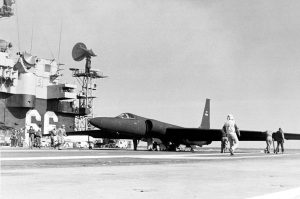 Americans don’t really like to think that our military is out spying on other countries, but like it or not, we spy on them, and they spy on us. We know it and they know it. So, spying is not really the problem…it’s getting caught that causes a problem. Getting caught is the ultimate faux pas, and that is what happened on May 1, 1960, when an American U-2 spy plane was shot down over the Soviet Union while conducting espionage. The plane was being operated by Central Intelligence Agency pilot Francis Powers, under the order of the CIA. The U-2 spy plane was the brainchild of the CIA, and it was in all reality, a sophisticated technological marvel. It could travel at altitudes of up to 70,000 feet, and it was equipped with state-of-the-art photography equipment that could, according to the CIA, take “high-resolution pictures of headlines in Russian newspapers as it flew overhead.” The flights over the Soviet Union began in mid-1956, and the CIA assured President Eisenhower that the Soviets did not possess anti-aircraft weapons sophisticated enough to shoot down the high-altitude planes. How wrong they were.
Americans don’t really like to think that our military is out spying on other countries, but like it or not, we spy on them, and they spy on us. We know it and they know it. So, spying is not really the problem…it’s getting caught that causes a problem. Getting caught is the ultimate faux pas, and that is what happened on May 1, 1960, when an American U-2 spy plane was shot down over the Soviet Union while conducting espionage. The plane was being operated by Central Intelligence Agency pilot Francis Powers, under the order of the CIA. The U-2 spy plane was the brainchild of the CIA, and it was in all reality, a sophisticated technological marvel. It could travel at altitudes of up to 70,000 feet, and it was equipped with state-of-the-art photography equipment that could, according to the CIA, take “high-resolution pictures of headlines in Russian newspapers as it flew overhead.” The flights over the Soviet Union began in mid-1956, and the CIA assured President Eisenhower that the Soviets did not possess anti-aircraft weapons sophisticated enough to shoot down the high-altitude planes. How wrong they were.
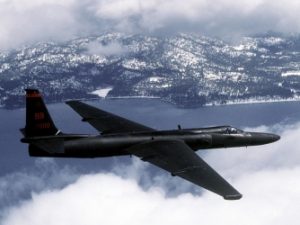 On May 1, 1960, over Russia, a U-2 flight piloted by Francis Gary Powers disappeared, while doing reconnaissance. The CIA reassured the president that, even if the plane had been shot down, it was equipped with self-destruct mechanisms that would render any wreckage unrecognizable and the pilot was instructed to kill himself in such a situation. Looking at the wreckage, I suppose it was unrecognizable…to a degree, at least in the picture, but how can a pilot be ordered to kill himself. I don’t know about you, but I would have to disobey that order. Apparently Powers felt the same way, because he parachuted out, rather than crash with the plane. Still, based on this information, the United States government issued a statement indicating that a weather plane had veered off course and supposedly crashed somewhere in the Soviet Union. Khrushchev took great pleasure in embarrassing the United States when he produced not only the mostly-intact wreckage of the U-2, but also the captured pilot…very much alive.
On May 1, 1960, over Russia, a U-2 flight piloted by Francis Gary Powers disappeared, while doing reconnaissance. The CIA reassured the president that, even if the plane had been shot down, it was equipped with self-destruct mechanisms that would render any wreckage unrecognizable and the pilot was instructed to kill himself in such a situation. Looking at the wreckage, I suppose it was unrecognizable…to a degree, at least in the picture, but how can a pilot be ordered to kill himself. I don’t know about you, but I would have to disobey that order. Apparently Powers felt the same way, because he parachuted out, rather than crash with the plane. Still, based on this information, the United States government issued a statement indicating that a weather plane had veered off course and supposedly crashed somewhere in the Soviet Union. Khrushchev took great pleasure in embarrassing the United States when he produced not only the mostly-intact wreckage of the U-2, but also the captured pilot…very much alive.
It was at this point that President Eisenhower had to publicly admit that it was indeed a United States spy plane. On May 16, a major summit between the United States, the Soviet Union, Great Britain, and France 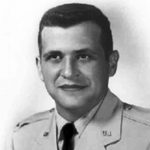
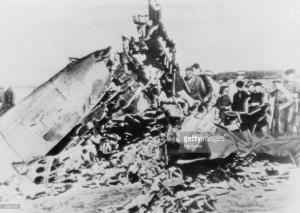 began in Paris. Issues to be discussed included the status of Berlin and nuclear arms control, but as the meeting opened, Khrushchev launched into a tirade against the United States and Eisenhower and then stormed out of the summit. The meeting collapsed immediately and the summit was called off. Eisenhower considered the “stupid U-2 mess” one of the worst debacles of his presidency. The summit was supposed to solve some things, but it ended up making matters much worse.
began in Paris. Issues to be discussed included the status of Berlin and nuclear arms control, but as the meeting opened, Khrushchev launched into a tirade against the United States and Eisenhower and then stormed out of the summit. The meeting collapsed immediately and the summit was called off. Eisenhower considered the “stupid U-2 mess” one of the worst debacles of his presidency. The summit was supposed to solve some things, but it ended up making matters much worse.

